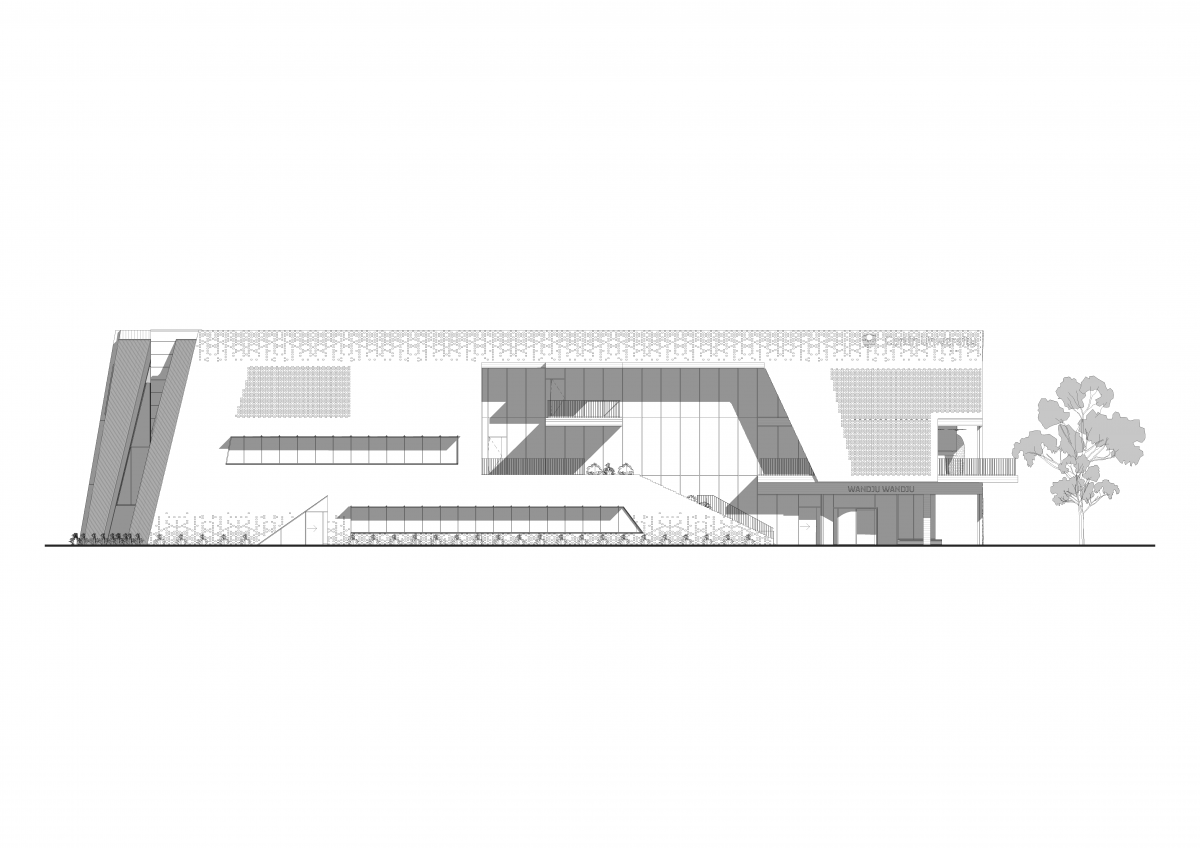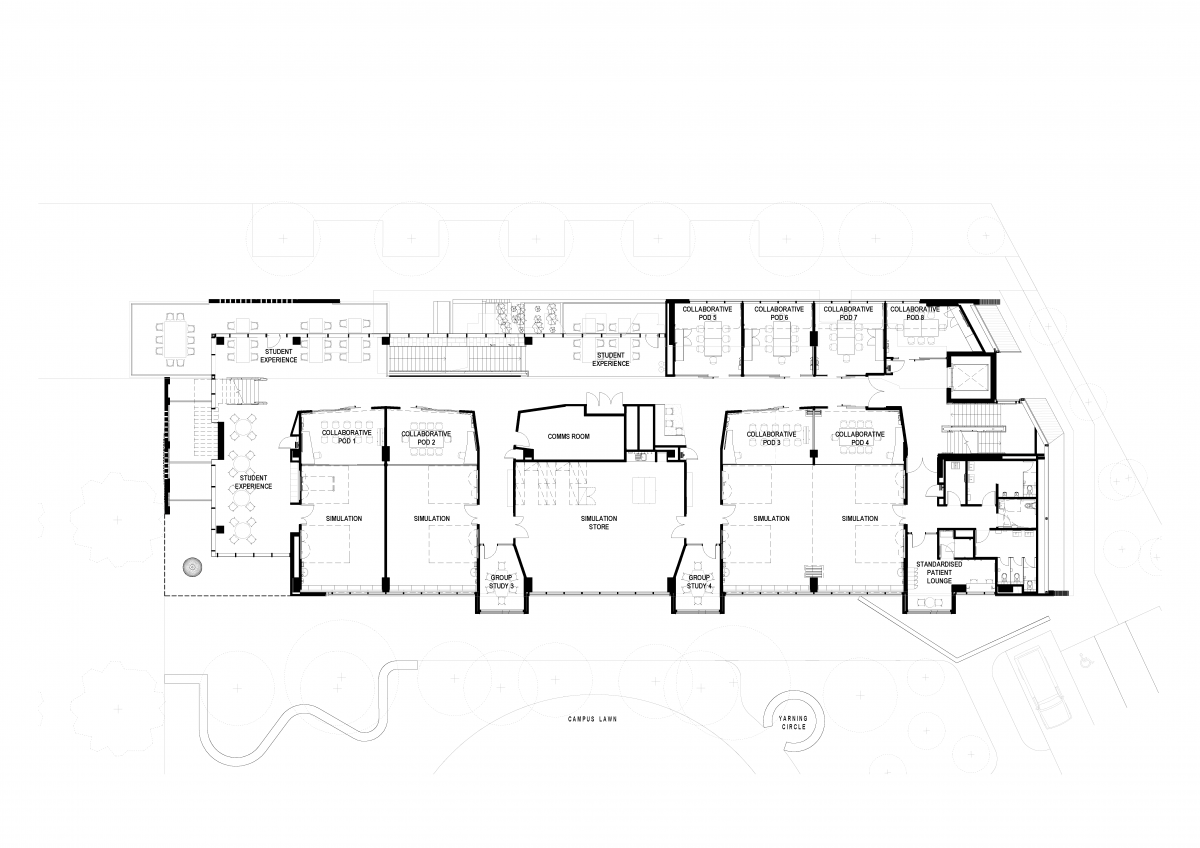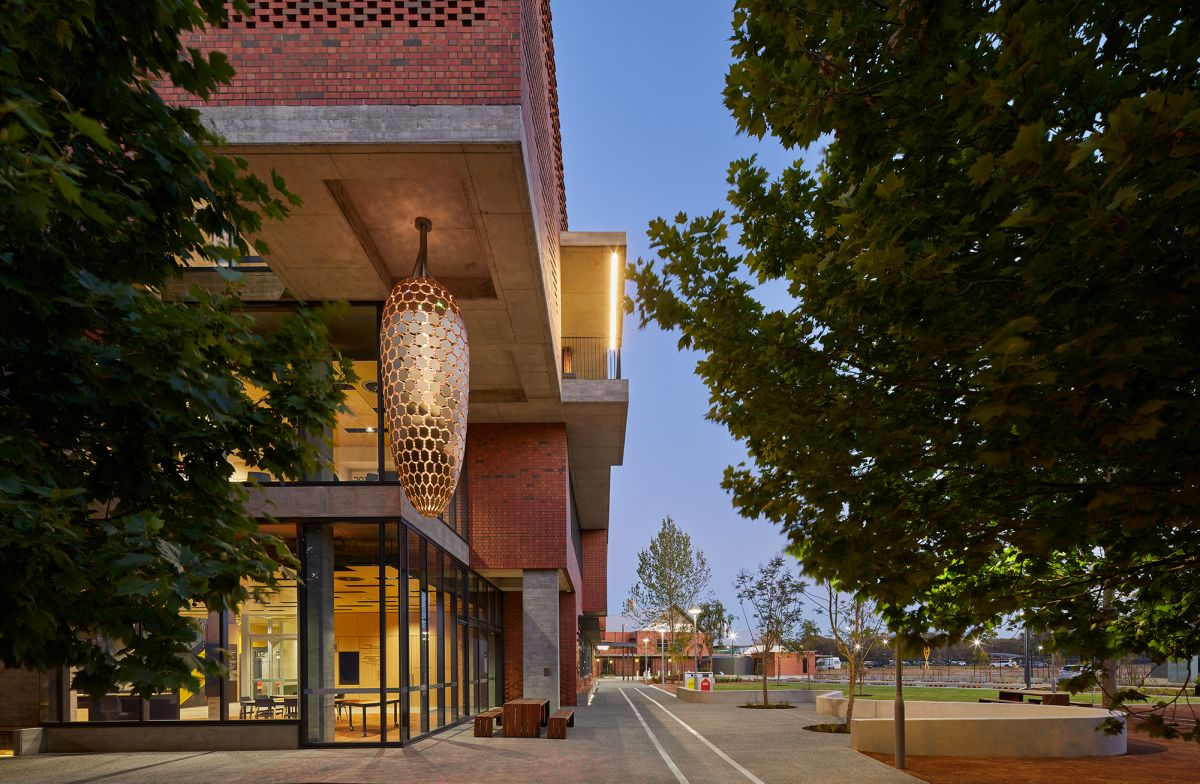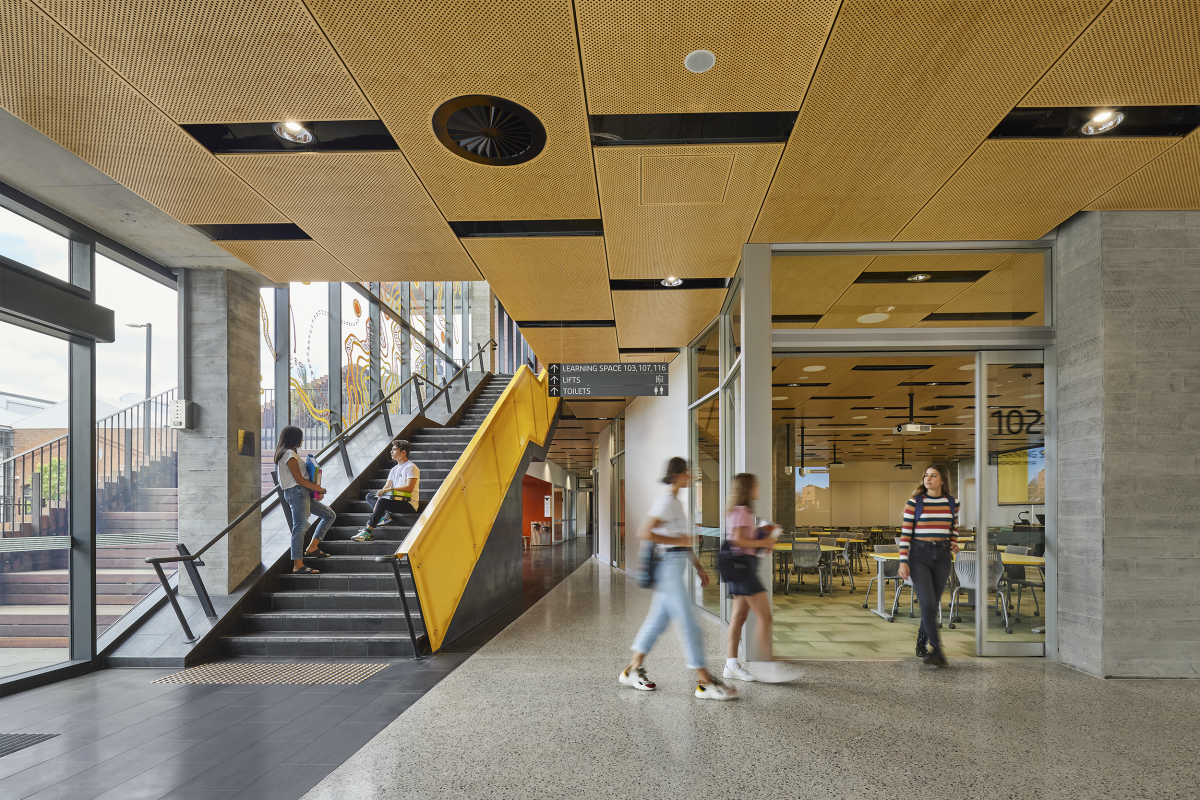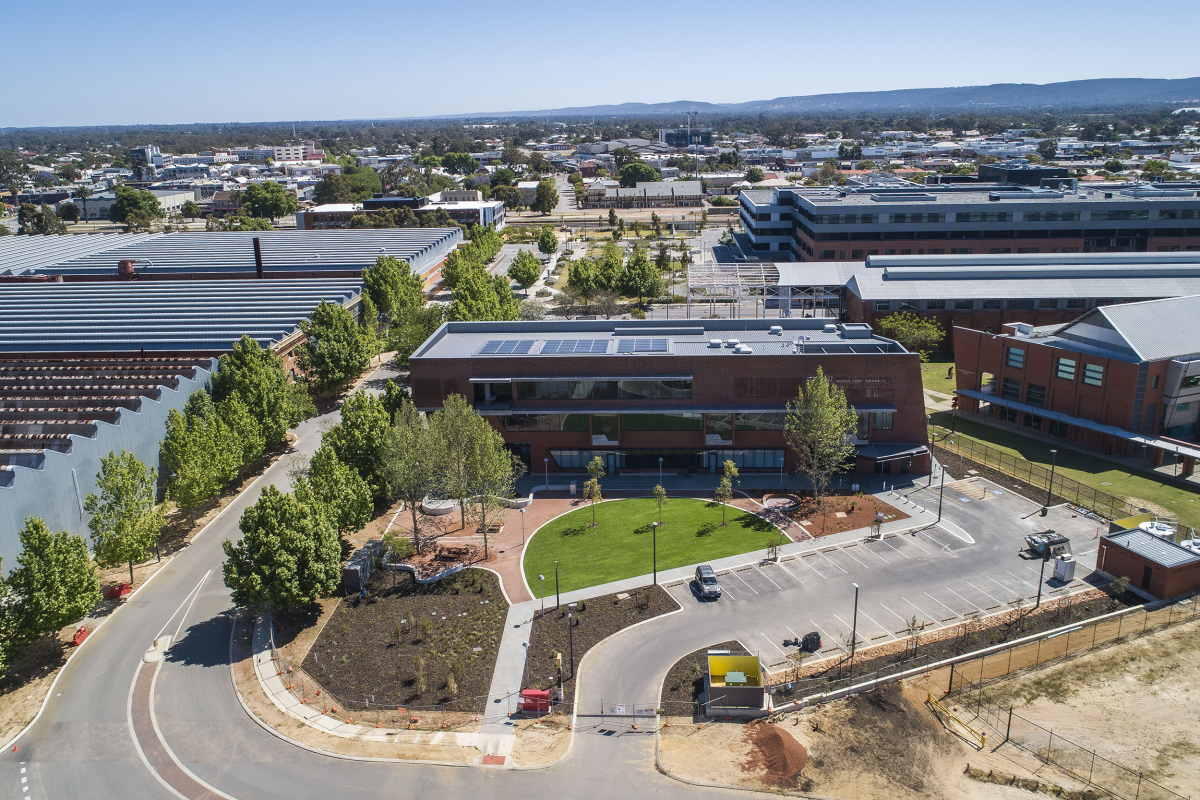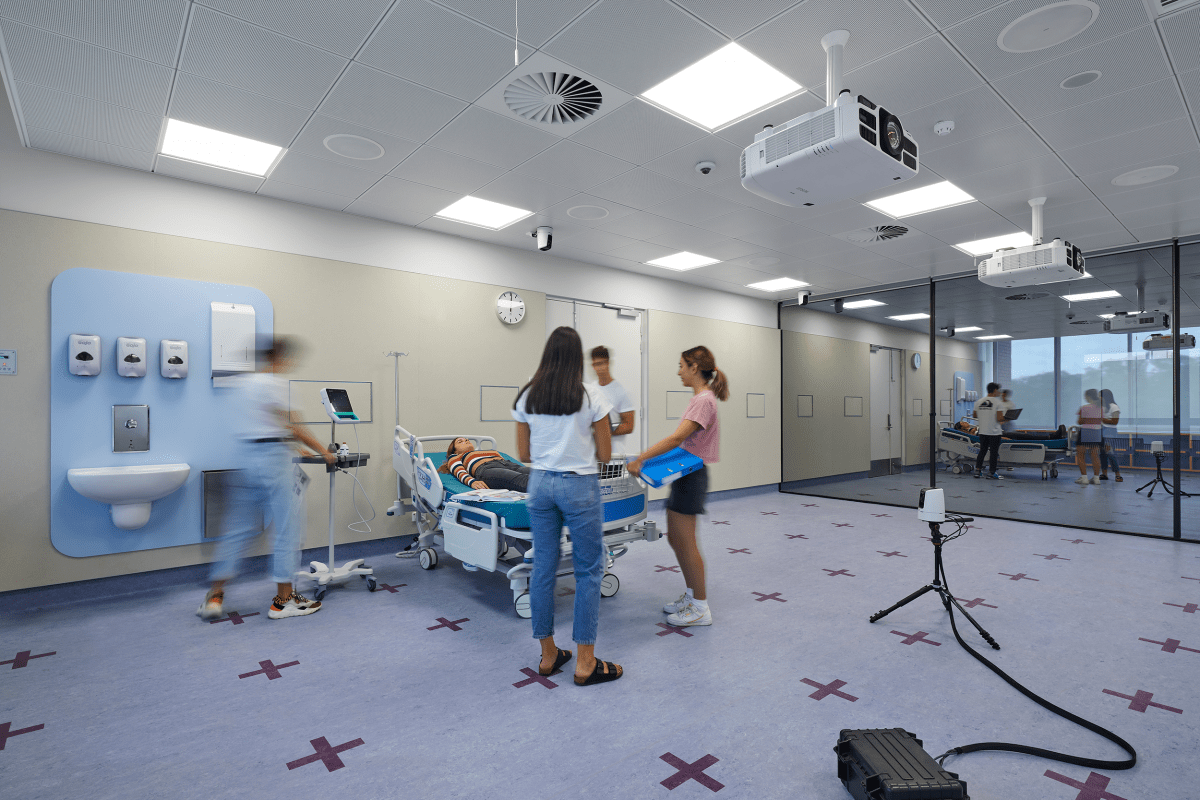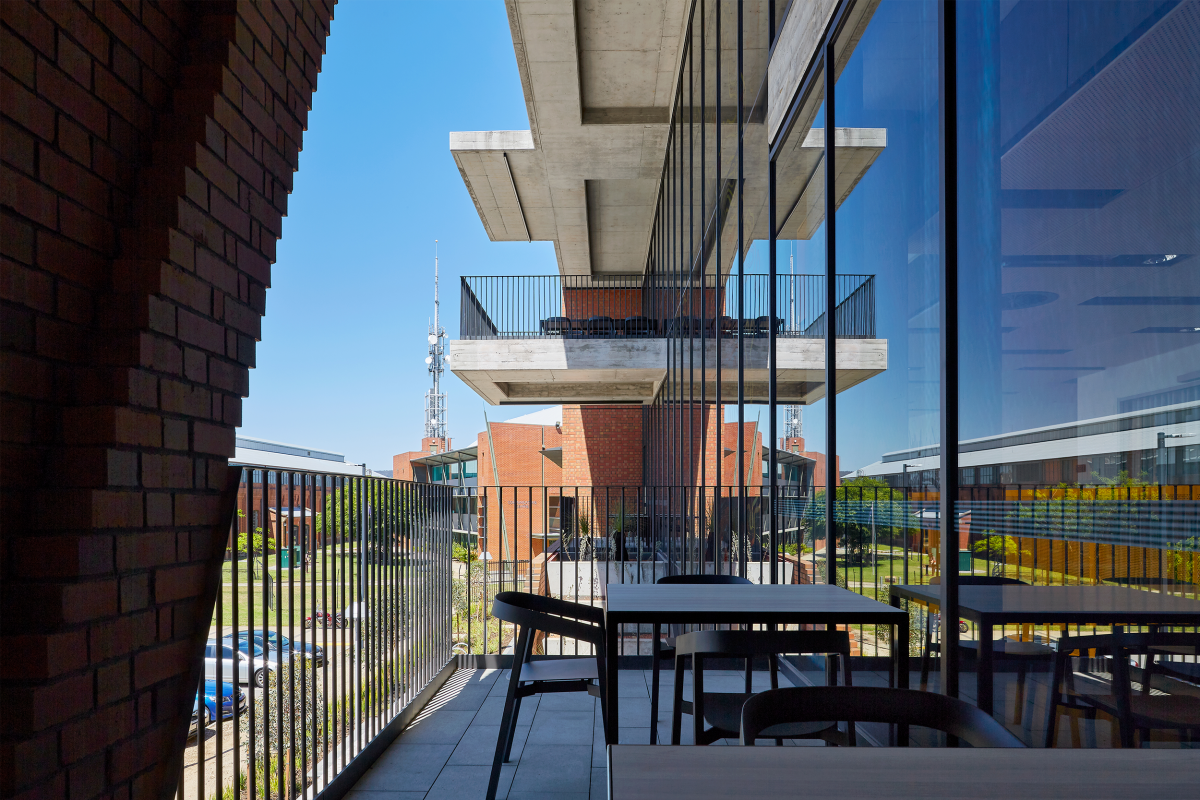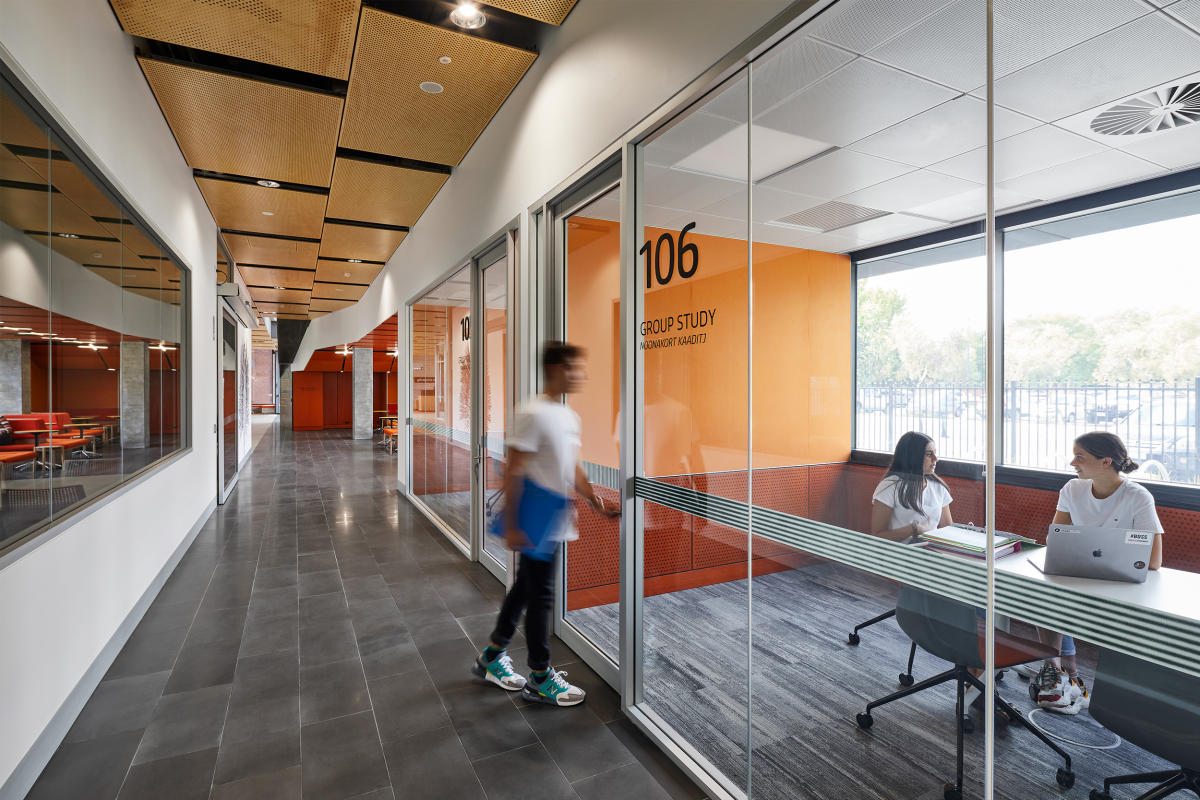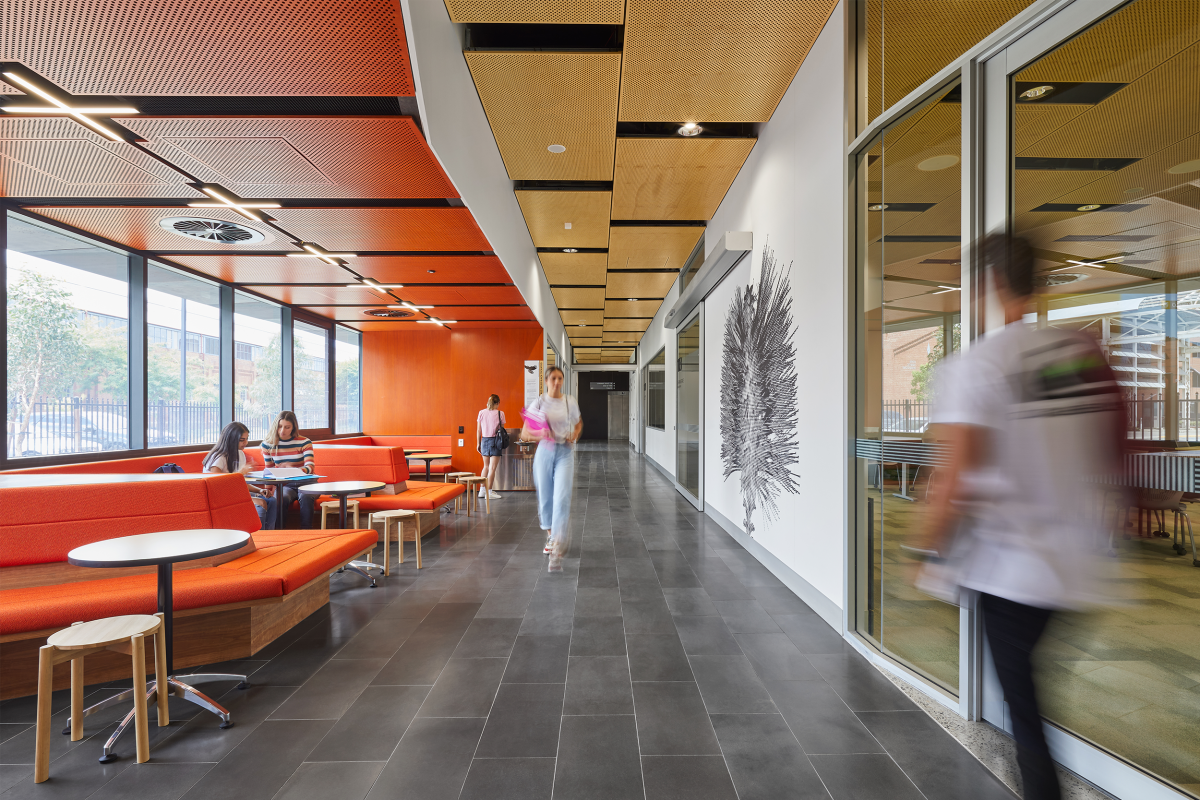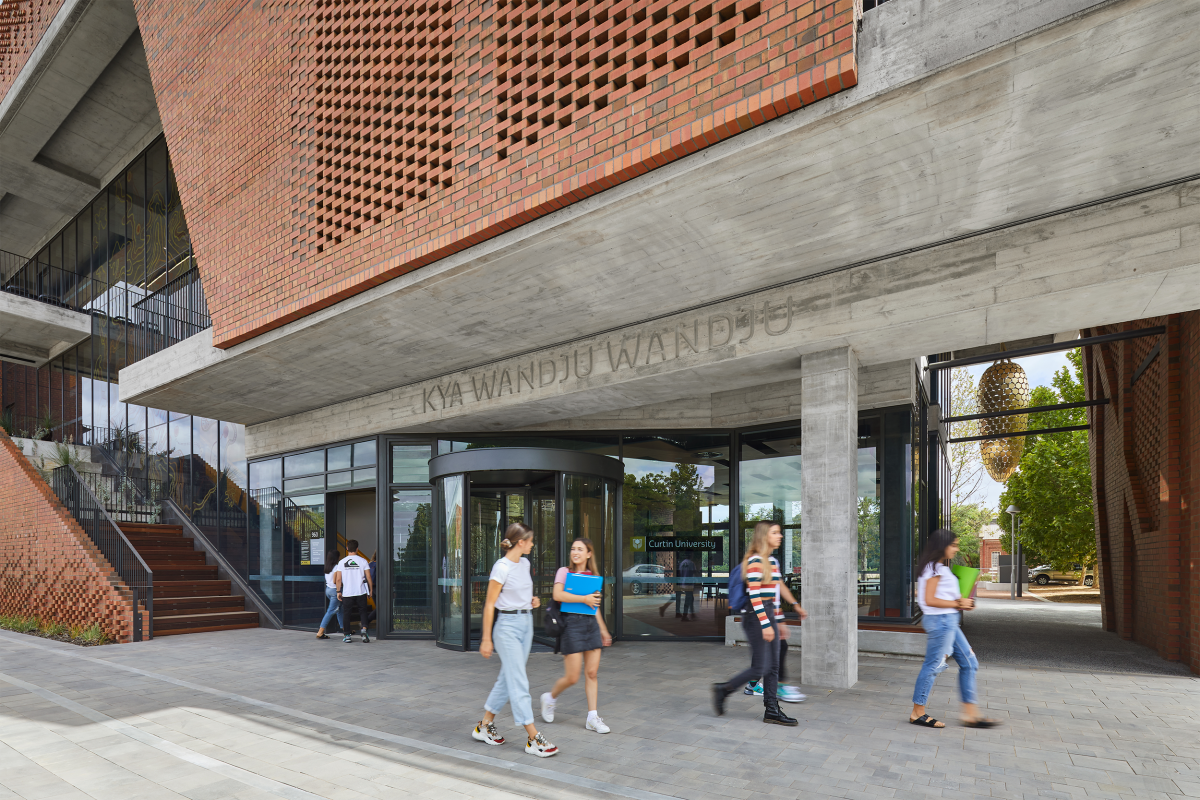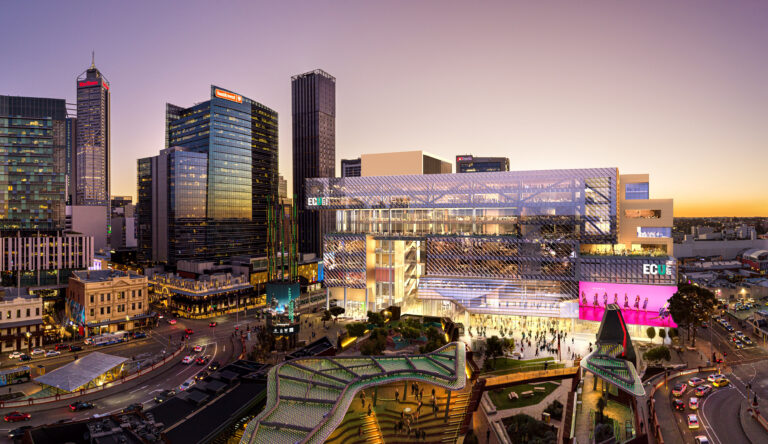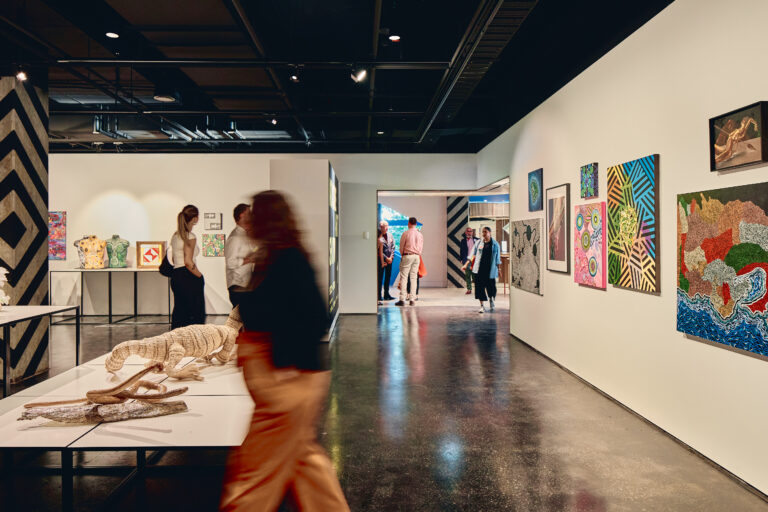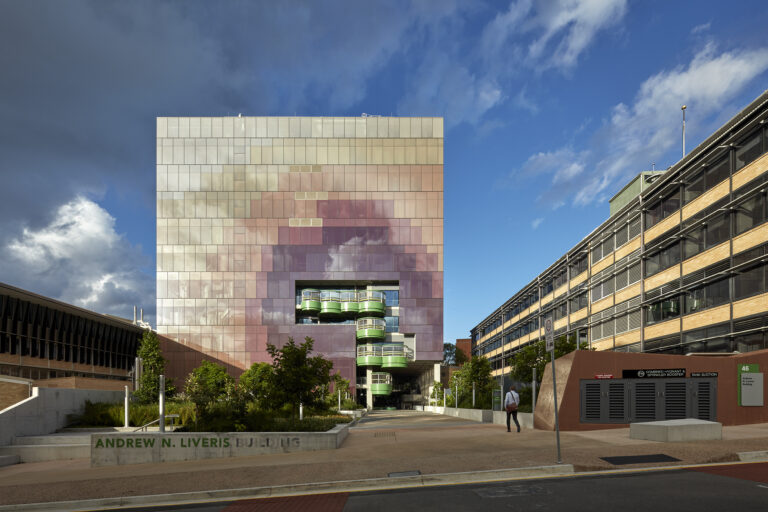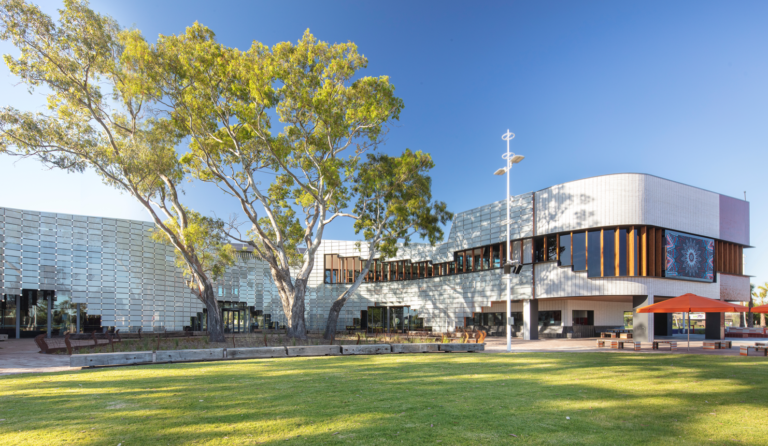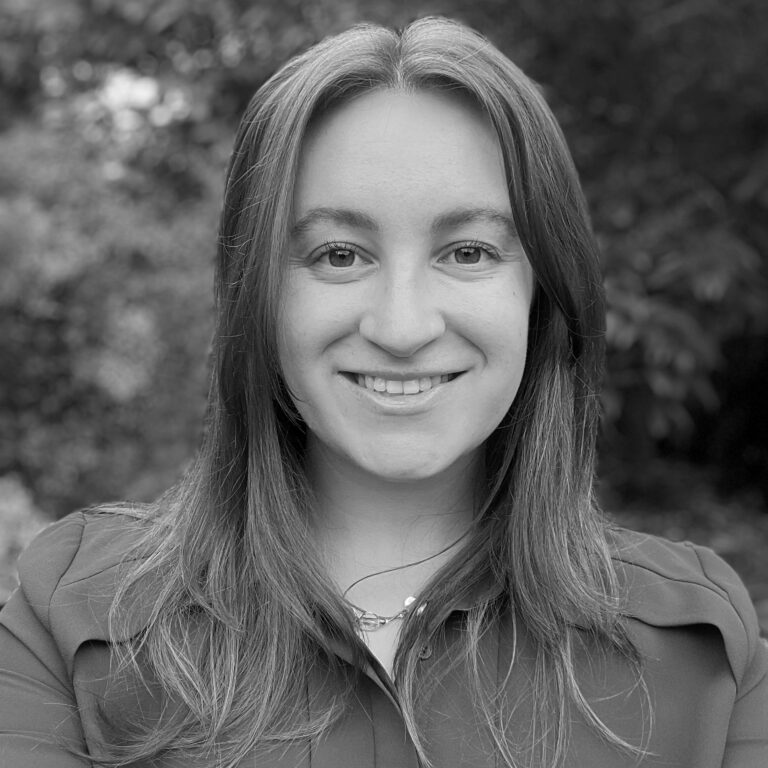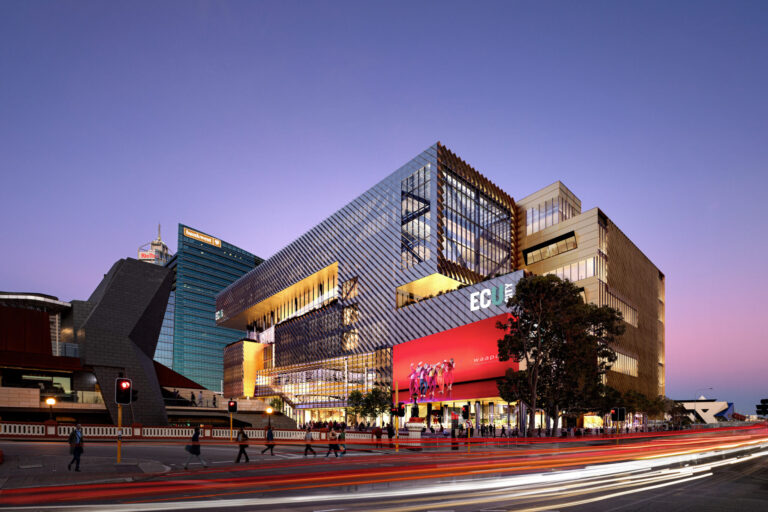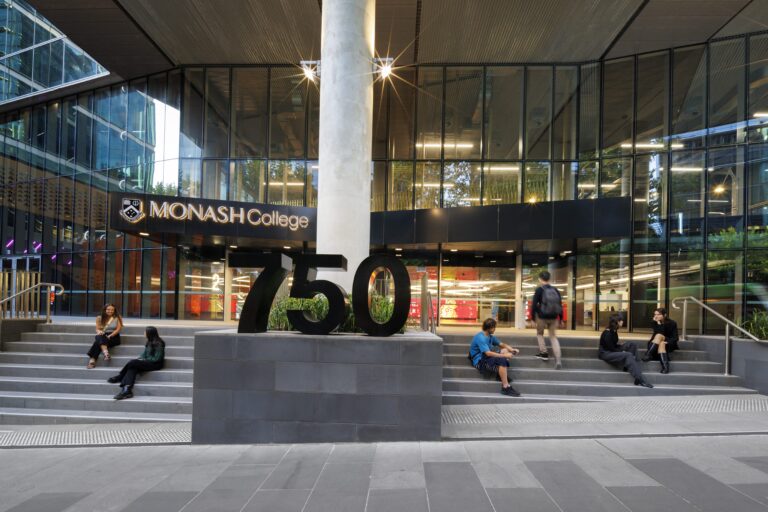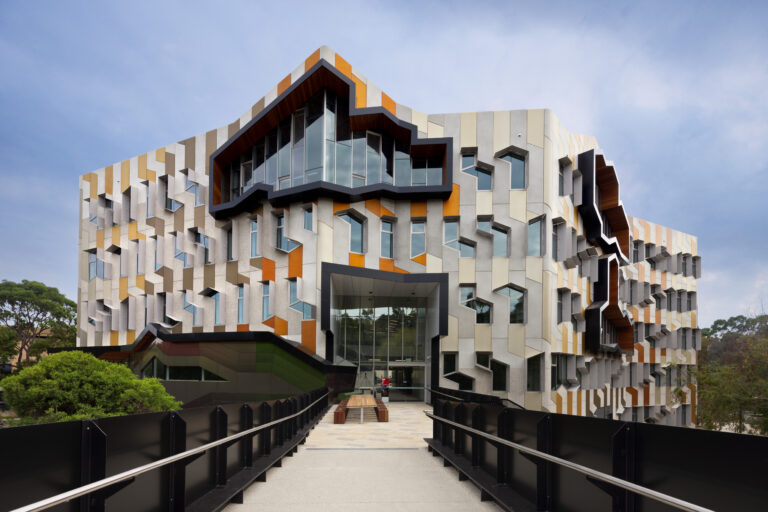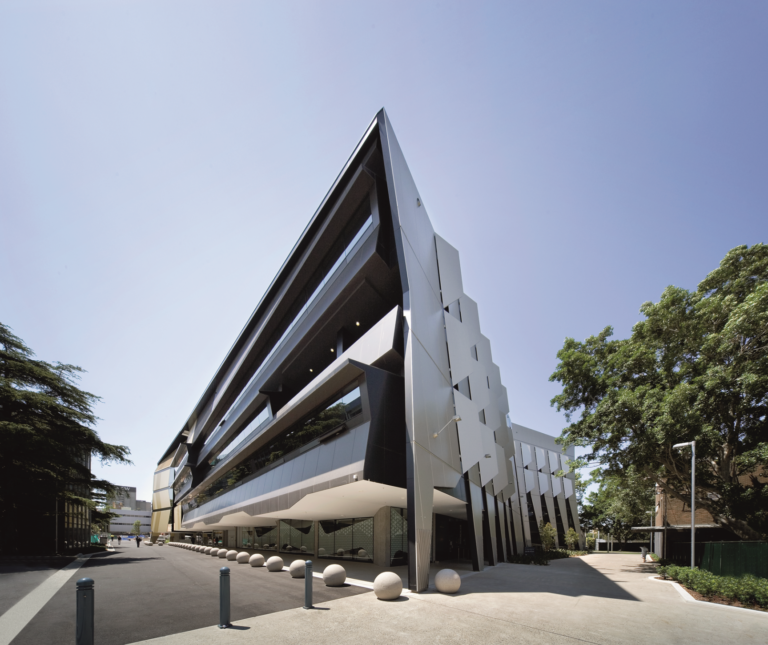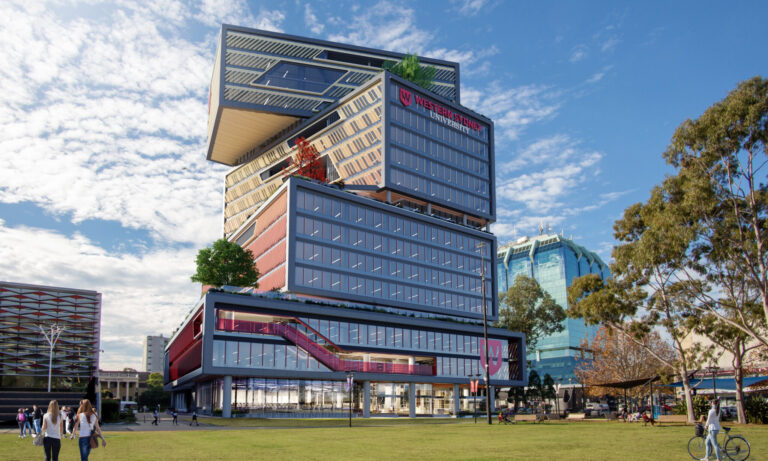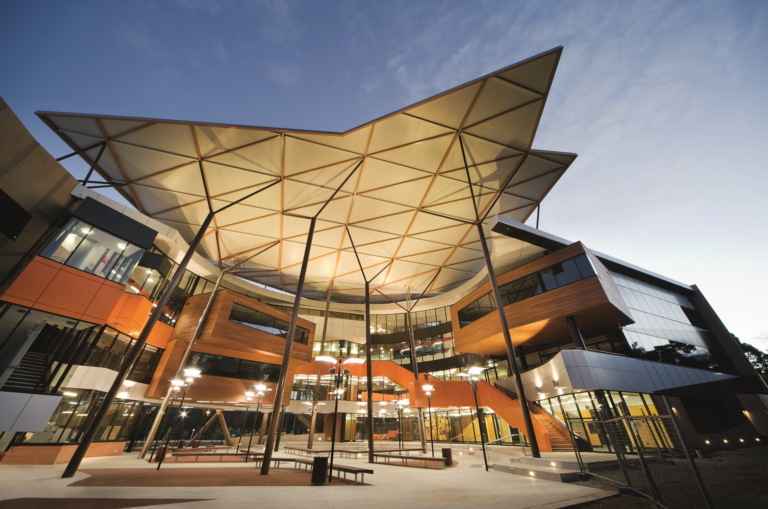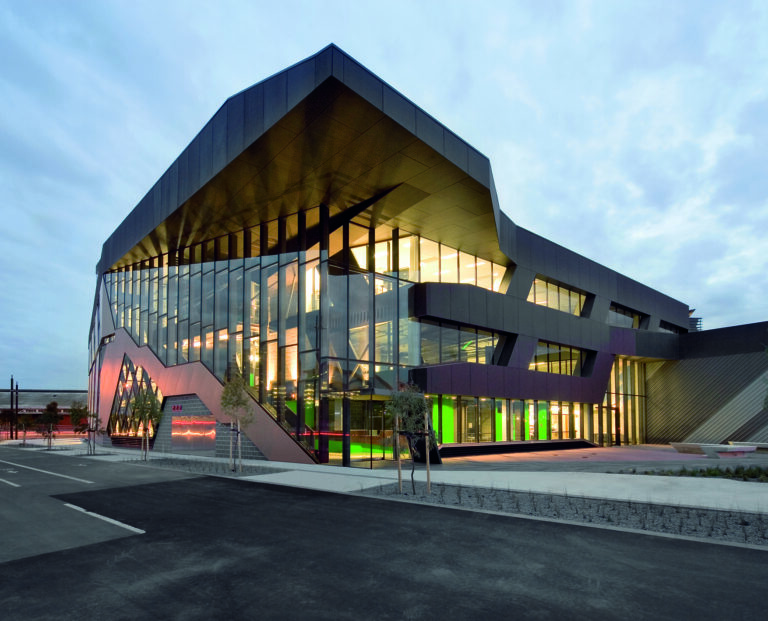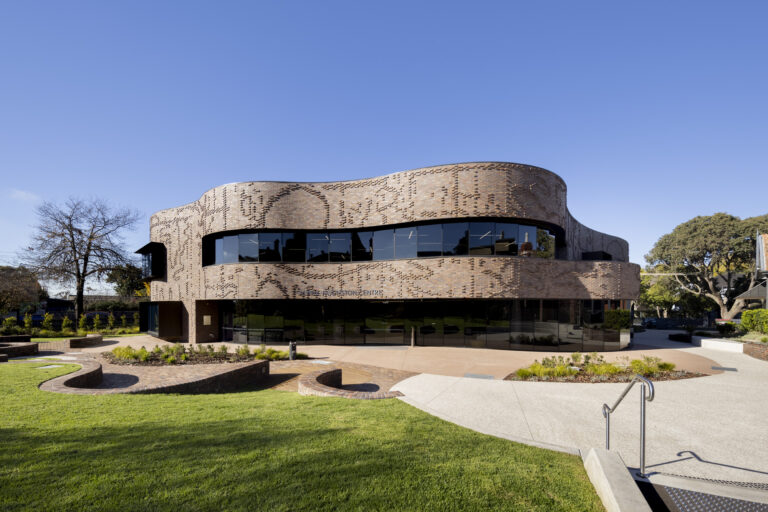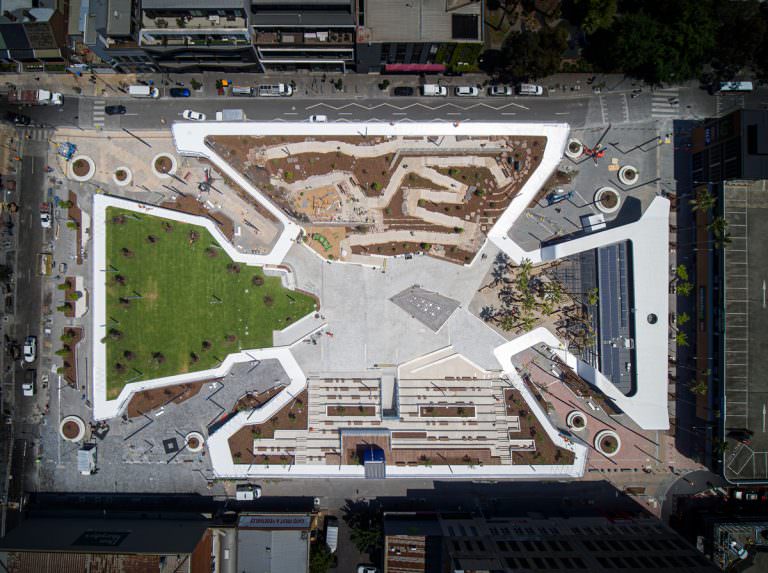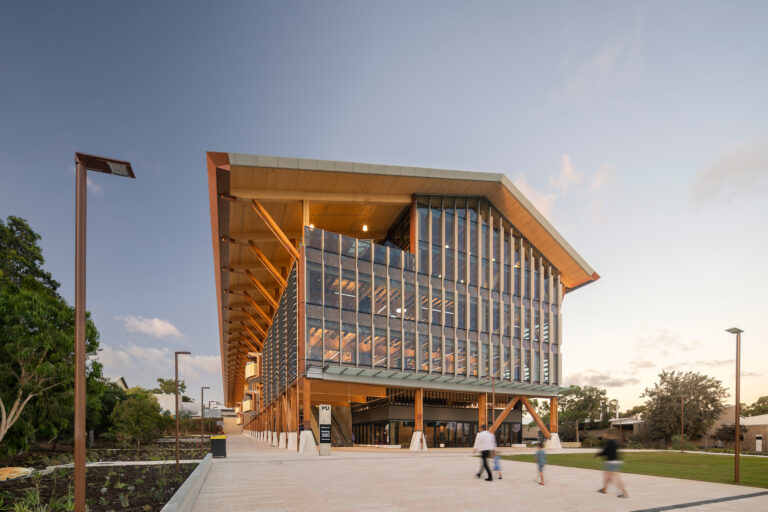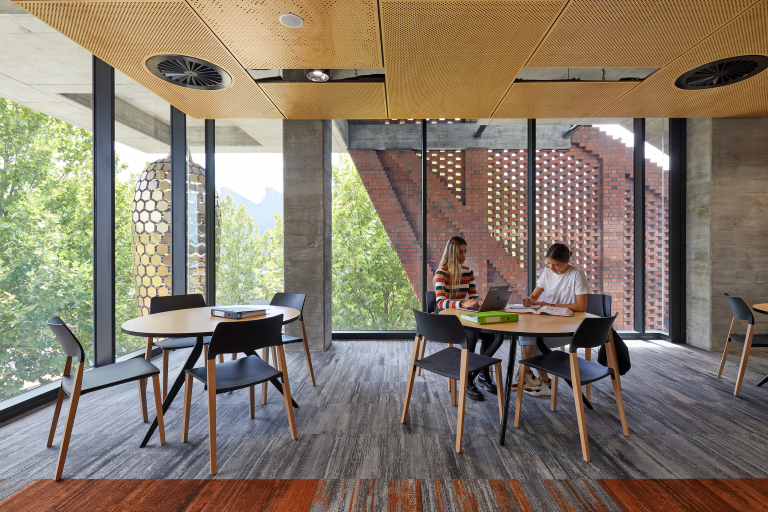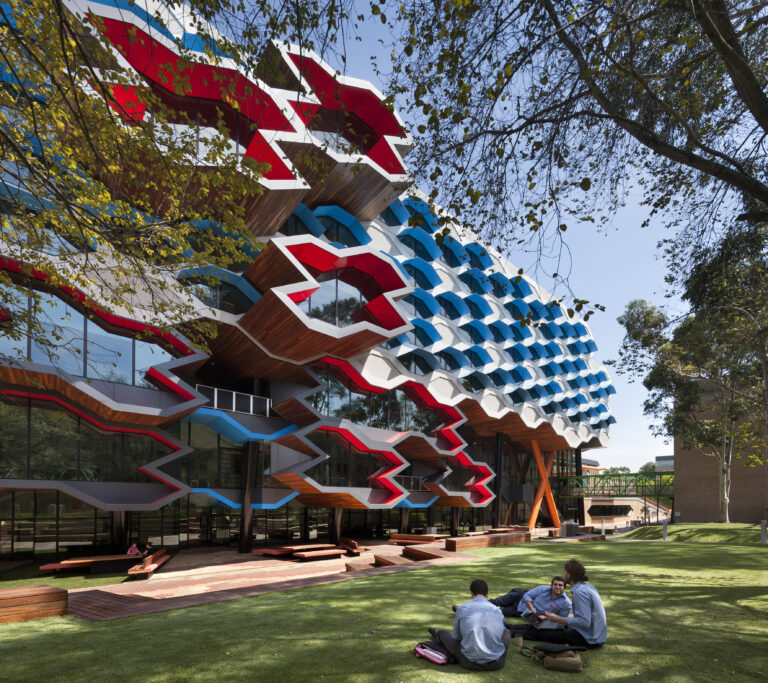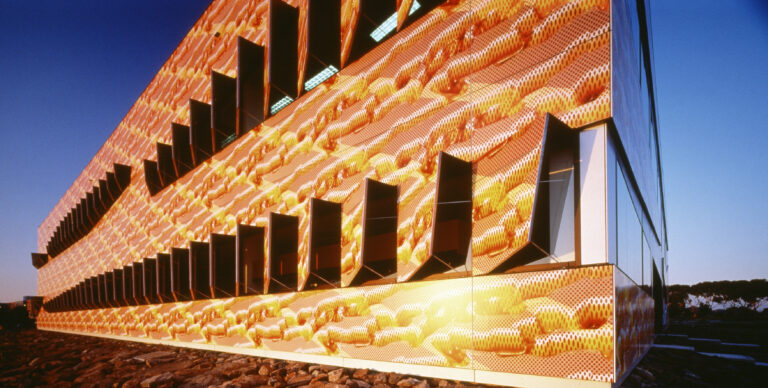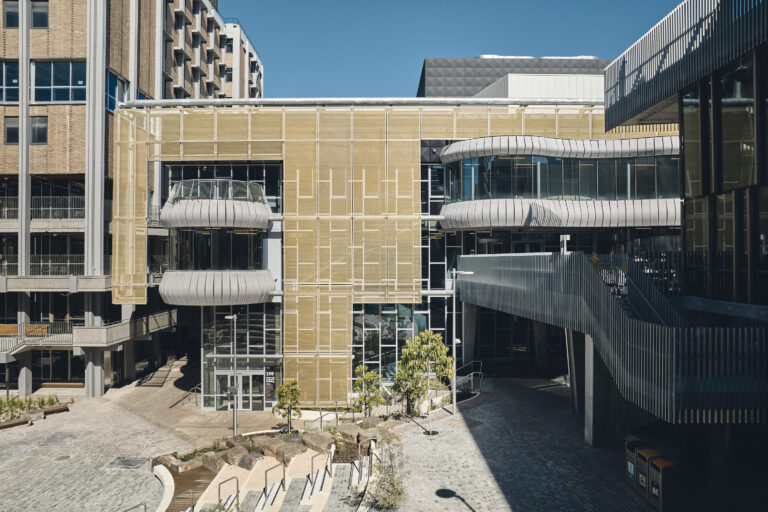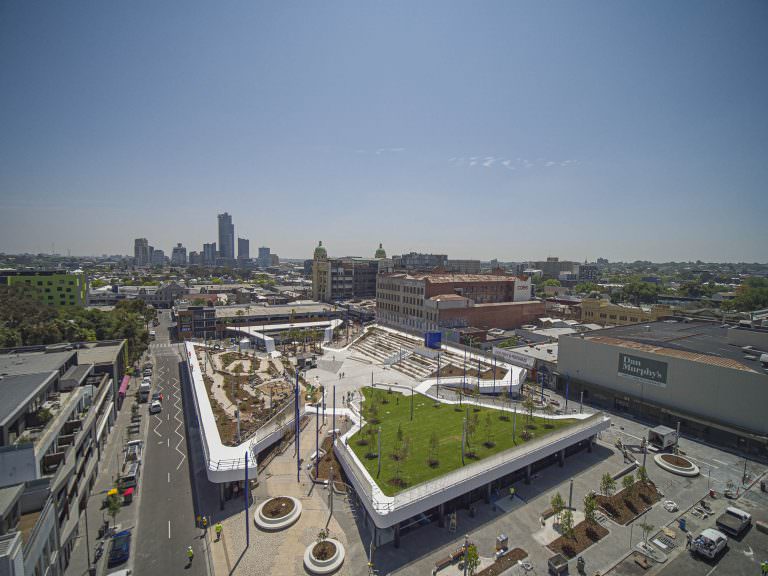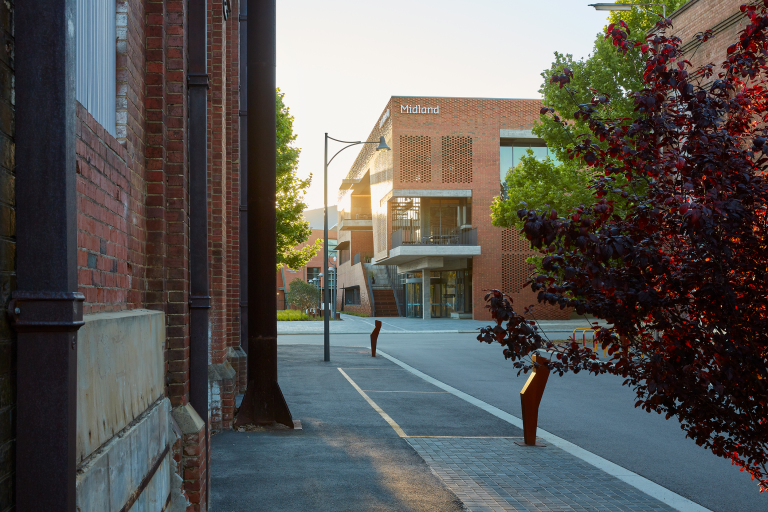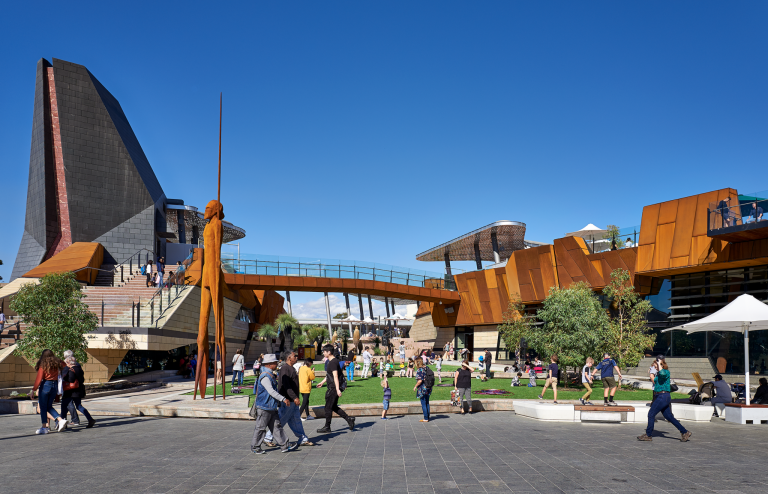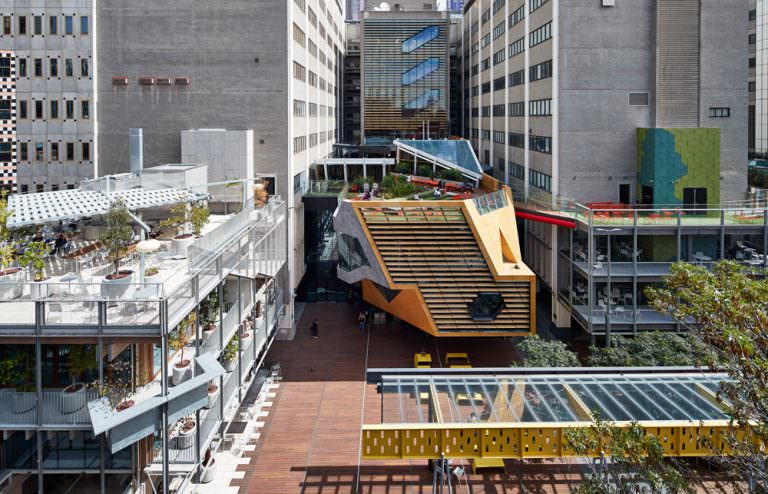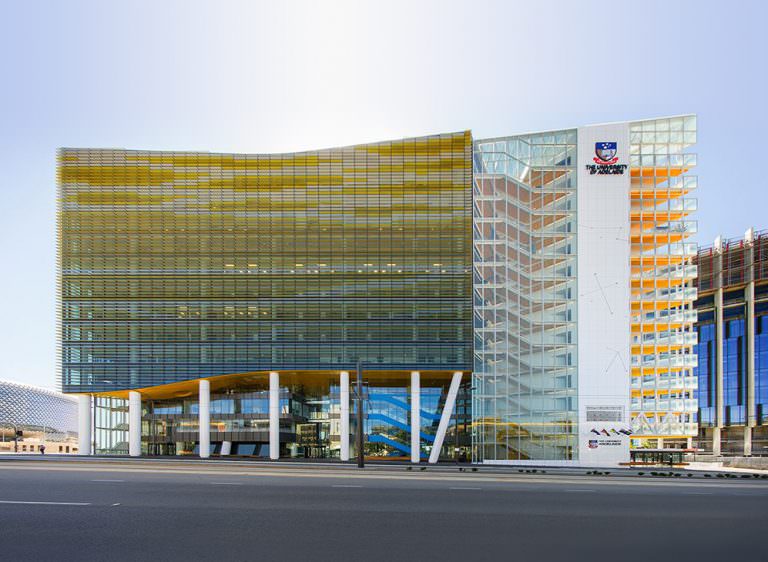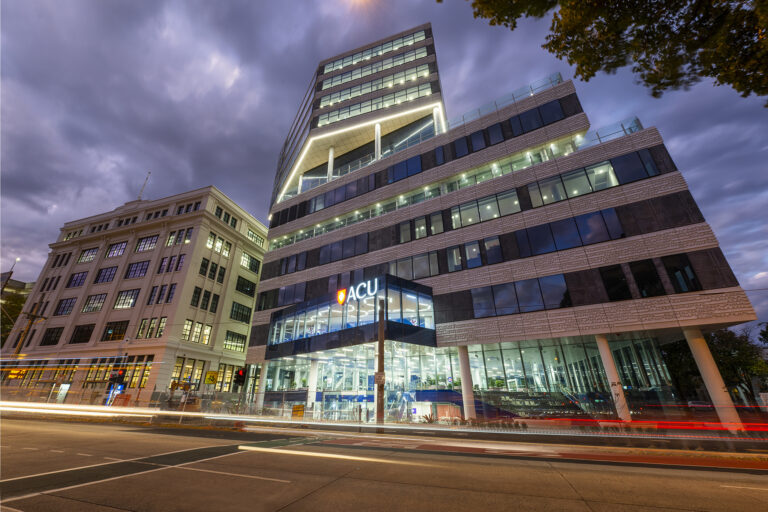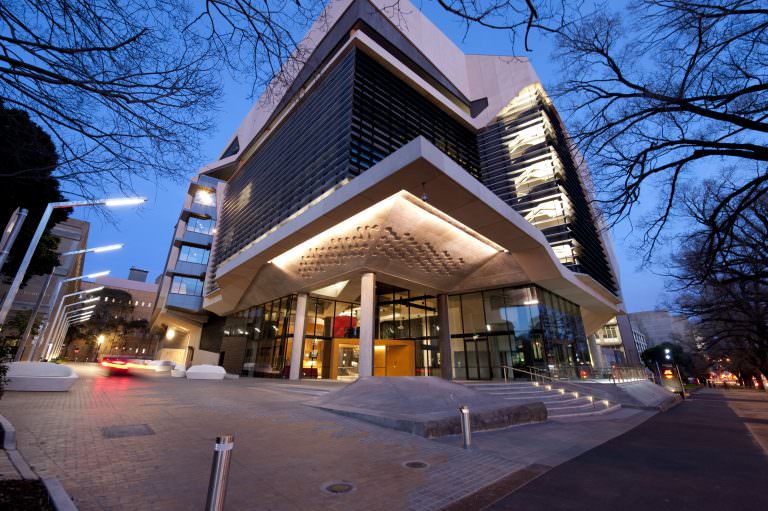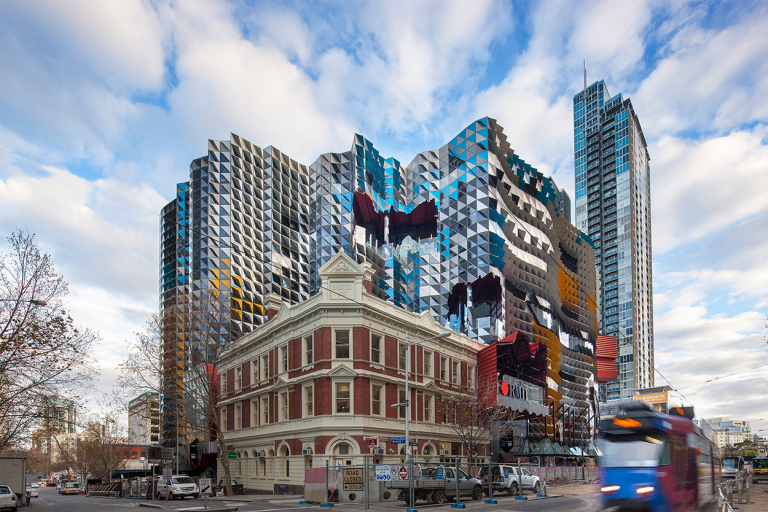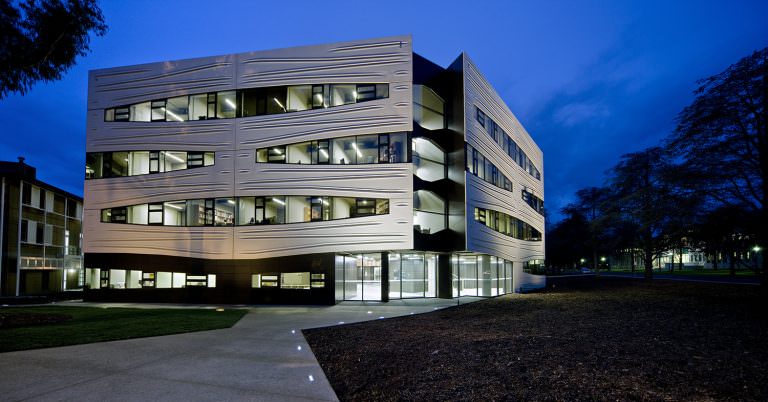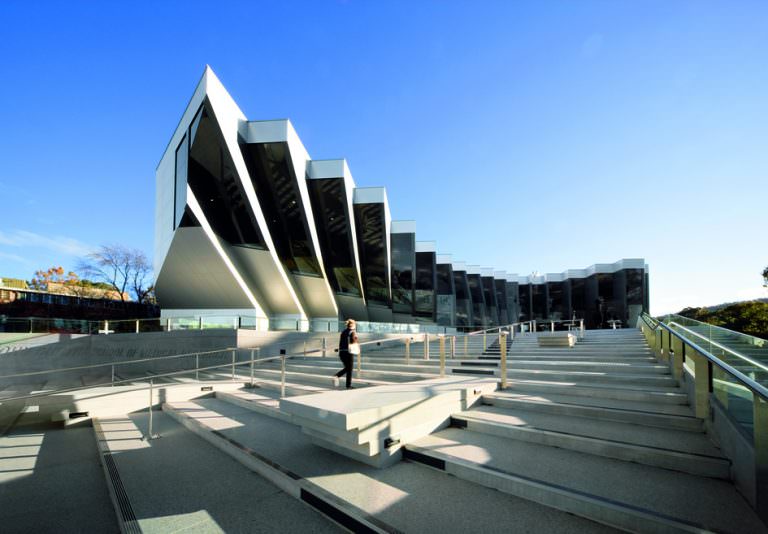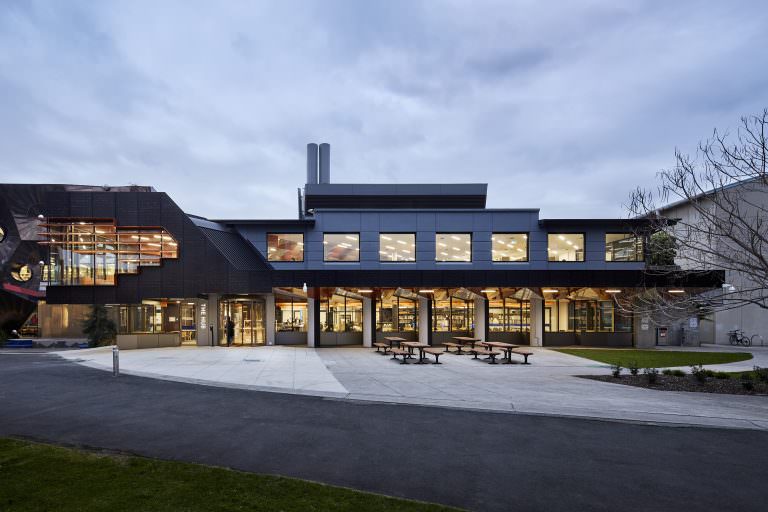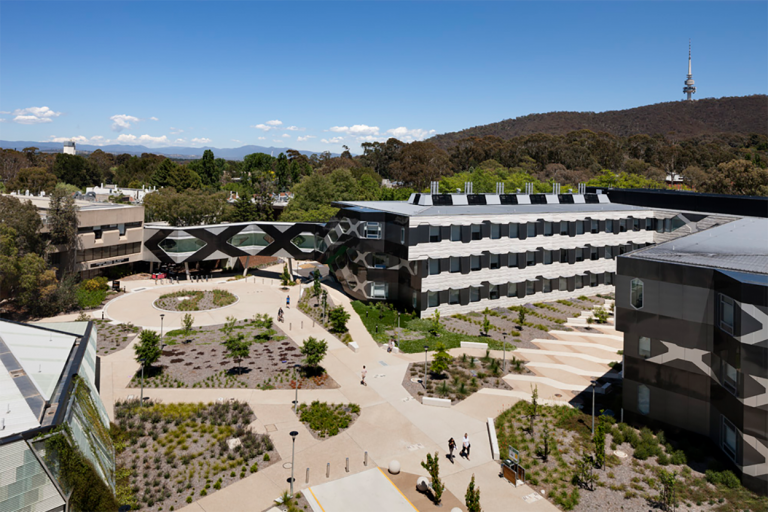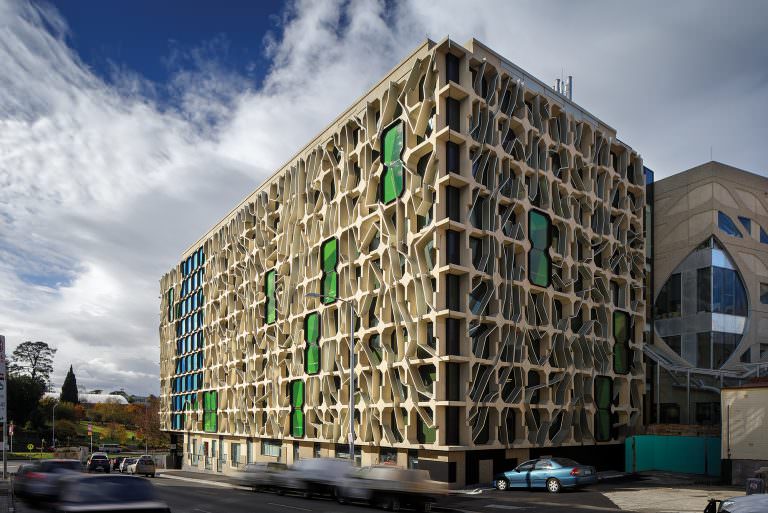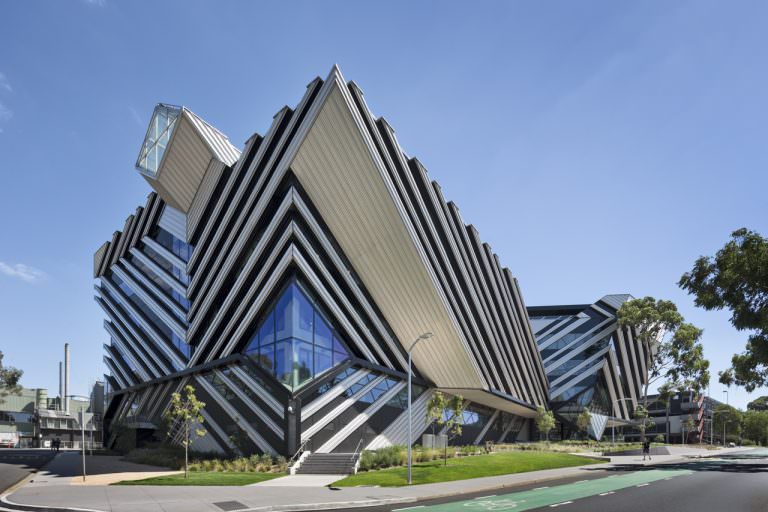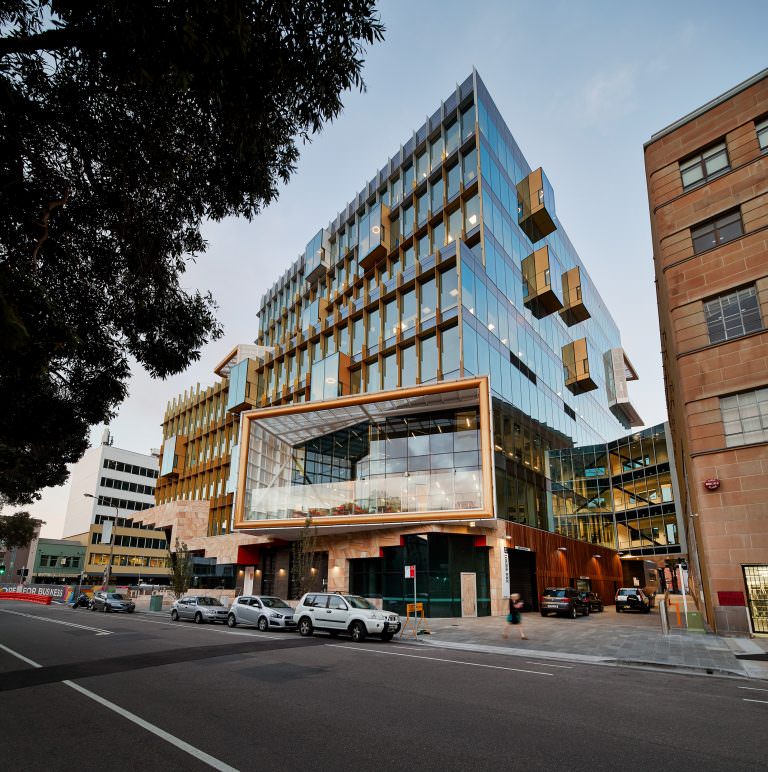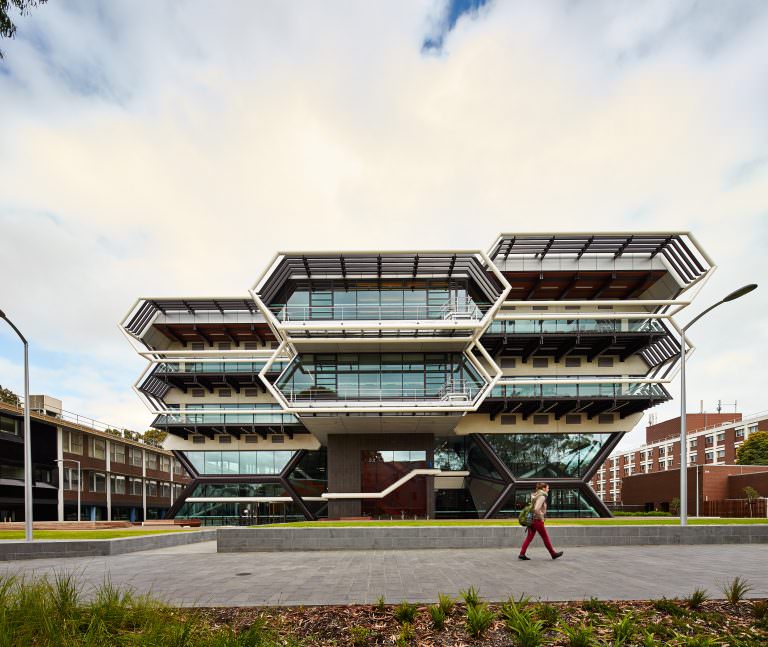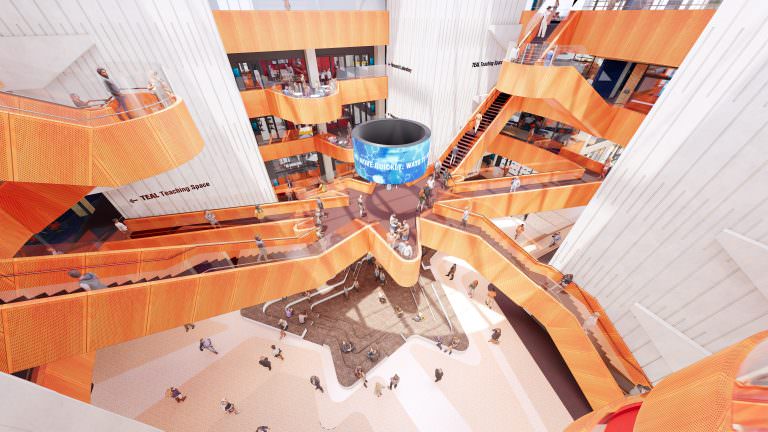Enabling empathy
Our design for Midland Campus shapes a specific experience for researchers, teachers, students and the community of Curtin University. It links them to an existing student lifestyle and shapes a new one. To give a sense of continuity and foster existing student culture, it was important the building reflected the distinctive brutalist architecture of Curtin University’s Bentley Campus and the historic Midland Rail Workshops. The building comprises complex structural forms like cantilevers and intricate red-flashed brickwork such as the brick brise-soleil veil of the facade. These accents act as signifiers to the Bentley Campus, reminding students they are part of a community.
As the first building of the new campus for Curtin University, our design needed to establish an educational building and account for all relevant amenities. The Campus has a people-centred design that enhances student experience. High levels of daylight and clear lines of sight to quality external views make internal spaces comfortable for study. To achieve this, the building form is conceptually a solid object, carved away to reveal the student workings within.
“We knew this unique facility needed to contain features that provided amenity for both public, campus use and educational facilities specific to medical training and research. As the first of what we know will be many buildings on campus grounds our considered design includes diverse social inclusive study spaces, access to natural, local materiality, culturally significant spaces for recreation and education (such as the yarning circle) and direct connection to the landscape like Helena river.”—James Wilson, Director at Lyons
Design details layer to acknowledge the connection to Indigenous culture, enhance the beautiful space and anchor it to the surroundings in a site specific environment. This enables more empathy for students and their future patients. The interior colour scheme is inspired by the area’s native plants, while abstracted local fauna and animals make up interior ceiling patterns. These design features, accompanied by dual language signage, act as a learning tool telling Indigenous stories on each floor of the building. As a medical training facility, the body parts are graphically displayed on the training walls in dual English / Whadjuk dialect to encourage language learning for the students and to increase connection with and cultural understanding of Indigenous patients.


